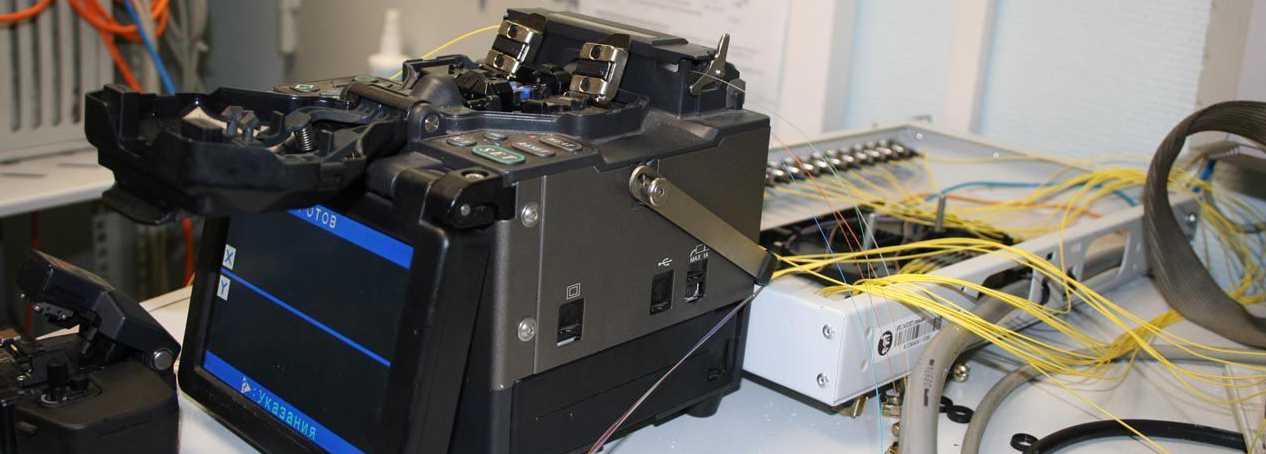Optical fiber welding is essentially an integral part of creating a fiber optic network, which is a cable assembly divided into separate sections to handle specific loads during system operation. According to the standard, periodic splitting of the network is required to make certain changes to its structure, followed by fiber welding.
To connect fibers, special devices called fusion splicers are usually used.
Key Fiber Optic Welding Processes
Fiber splicing involves several stages:
- The top insulation of the optical fiber cable is removed. Then the top part of the modules, where many fibers are located, is removed.
- Cleaning the cable from hydrophobic material. Here, a clear or slightly colored gel will need to be applied. Special sleeves (heat-shrink tubing with a strength member) are used to protect the joints. The outer surface of the fibers is stripped of colored lacquer and protective coating for 2-3 cm. Then it is polished with alcohol solution.
- In the final process, the ends of the optical fiber network cables are tightly and securely bonded to each other. The cutting direction should be perpendicular. After the connection is completed, the wave transmission must be accurate, so there should be no cracks or defects.
- Creating joint protection. By pre-treating the cable end with heat-shrink tubing, maximum reliability and durability are ensured. This construction is represented by a tube with a strength member. These features enable the fusion splicing of optical cables to be carried out with a higher quality result.
Soldering Process
- Clamping the optical fiber. Clamps are provided on the welding equipment to fix the ends during work.
- Adjustment. At this stage, optical fibers need to be properly aligned before starting the soldering process. In this case, special equipment with a high-precision alignment system may be used. Additionally, fast alignment can be performed in automatic mode. If such equipment is not available, connections are made manually using a microscope.
- Soldering. An electric arc is used for soldering. The gap before soldering on the prepared fiber should be minimal. When heated to the required temperature, fiber ends are fused together.
- Quality control of the work performed. Special equipment is used for such work. This device is designed to check the accuracy of cable connections and signal attenuation levels.
- Connection protection system. The sleeve, which was previously put on the cable, is installed at the splice site. As a result of heat exposure, the heat shrink tubing is tightly wrapped around the joint.
After completing all soldering work, testing of optical fiber welding can be carried out. In this case, an optical tester and reflectometer are used. This check allows determining the attenuation level and length of the optical fiber at all welding points and main lines.
When obtaining a high-quality signal from one cable section to another, optical fiber welding is applied. A modern apparatus is required to connect fibers. Of course, the training of welders must meet the requirements. A negative result of the work can lead to the failure of the entire optical line. Therefore, it is better to seek help from qualified specialists, which we are, who will provide this service with quality and within the specified timeframe.
| Order optical cable soldering from our specialists

